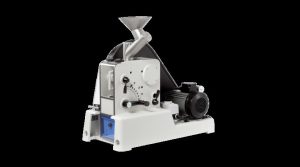Research
Complex stratigraphic subdivision and section correlation:
- micro- and macropaleontological conclusions;
- schemes for the complex subdivision of borehole sections and outcrops;
detailed correlation schemes; - sequence-stratigraphic constructions and reconstructions;
- analysis of the dynamics of changes in the accommodation space, transgressive-regressive cyclicity, progradation-retrogradation cyclicity and other parameters of the evolution of oil and gas basins.
Biostratigraphy
- study of foraminifera;
- study of conodonts;
- ostracod research;
- study of calcareous nanoplankton;
- palynology;
- study of palynofacies;
- stratigraphic analysis;
- correlation studies and interdisciplinary complex studies.
Quantitative micropaleontology:
- laboratory processing of samples;
- collection of shells of conodonts, ostracods, and foraminifers in Franco’s chambers;
- identification of faunal remains;
- conclusion about the age and genesis of deposits;
- making photographs of microfossils.
Qauntitative palynology:
- laboratory processing of samples;
- viewing preparations under a microscope and identification;
- conclusion about the age and genesis of deposits;
- making photographs of microfossils.
Interpretation of paleoclimatic data:
- paleoclimatic analysis of paleontological data;
- paleoclimatic analysis of lithological data;
- paleoclimatic analysis of micropaleontological description of thin sections.
Chronological stratigraphic section of cuts:
- compilation of chronological stratigraphic maps.
Sequence stratigraphy modeling:
- sequence-stratigraphic analysis of a sedimentary basin or its section;
- construction of a regional sea level curve;
- construction of a curve of vertical tectonic movements;
- identification of the main sequence-stratigraphic elements (sequence boundaries, system tracts, maximum flooding surfaces).
Analysis of accommodation space:
- basin analysis.
Event stratigraphy:
- studies of the material composition of rocks (X-ray structural, chemical, petrographic, electron microscopic, geochemical).
 Vladimir Silantiev
Vladimir Silantiev
Doctor of Science in Geology and Mineralogy, Professor
Chair of the Department of Paleontology and Stratigraphy
FRITSCH jaw crusher

The FRITSCH Compact Jaw Crusher is ideal for fast and efficient pre-grinding in batches or continuously hard to very hard materials.
Concentration table

The concentration table is designed to separate minerals in the aquatic environment according to their specific gravity with a material size of 0.04 to 3 mm.
The surface of the table is corrugated. The height of the riffles is from 0.1 to 5 mm. The separation of the material on the table is determined by the specific gravity of the particles of the material, as well as the force of the water flowing down the slope of the table and the force from the movement of the deck acting perpendicular to the movement of the water. The material diverges on the table like a fan and can be divided into any number of products. The separated product is collected in collections.

